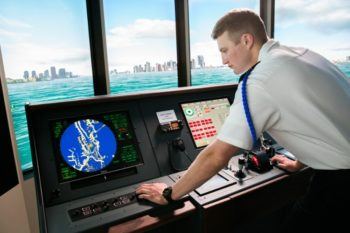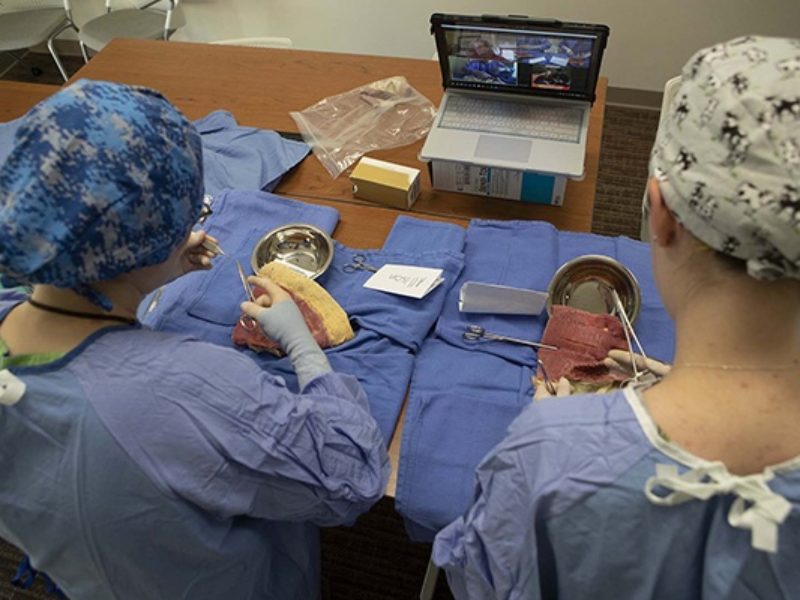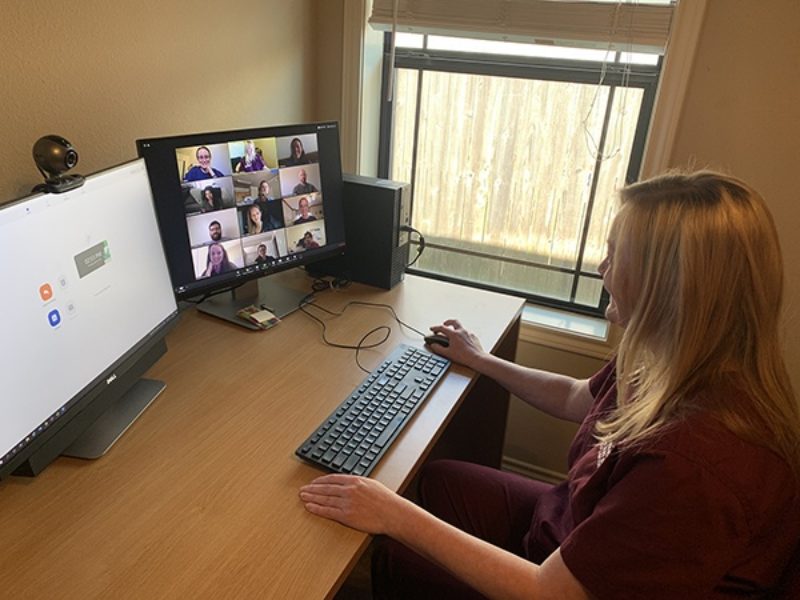Texas A&M-Galveston Used As Testing Ground For Virtual Simulator Learning

Texas A&M University at Galveston recently served as the beta testing ground for remote simulator learning to ensure that both cadets from the Texas A&M Maritime Academy and those from other state maritime academies are receiving the critical training they need to fulfill degree and licensure requirements.
Students undergo nearly 128 hours of mandatory vessel simulator training to learn how to safely navigate the world’s waterways. The training is required as part of their degree program at Texas A&M-Galveston and to receive their Coast Guard license. Capt. Augusta Roth, Galveston Campus Maritime Transportation department head, and Technical Laboratory Coordinator Patrick Zimmer approached Anthony Kunecki, president of NavSim Services, Inc., the company behind the campus’ simulator, in early March in response to the uncertainties surrounding the COVID-19 pandemic.
“We are working closely with the U.S. Coast Guard, U.S. Maritime Administration and the university to ensure the best quality of education and meet the expectation of degree, licensing and credentials,” Roth said. “We are not going to reduce any of the requirements, just add a twist to delivery.
Kunecki said instructors are still able to achieve “nearly the same” class session they would in person – but now they are using Zoom to communicate with students. Students are also using TeamViewer to access the simulation exercises.
Teamviewer is a third party software package that NavSim’s Vice President Bob Majewski loaded onto NavSim’s normal simulator system configuration setup. He said it had never been utilized in this way. After installing TeamViewer Host on the Texas A&M-Galveston simulator computers via a virtual private network, he trained Zimmer on its use.
“One of the most fulfilling aspects of this process is that we’ve served as the testbed for the other state maritime academies to move to online training,” Zimmer said. “The lessons we’ve learned with our partners at NavSim will benefit the other academies and make their transition to online training that much smoother. Given the uniqueness of the challenges to overcome this semester, we have created an optimal solution given the circumstances and technology available to us.”
Since its implementation at the Galveston Campus, the solution has now been extended to SUNY Maritime College.
“If any knowledge, understanding or proficiency cannot be done via virtual interaction, we will revisit the subject or assessment once we are in person during our weekly forums or on cruises,” Roth said.
This article by Andréa Bolt originally appeared on the Texas A&M University at Galveston website.





